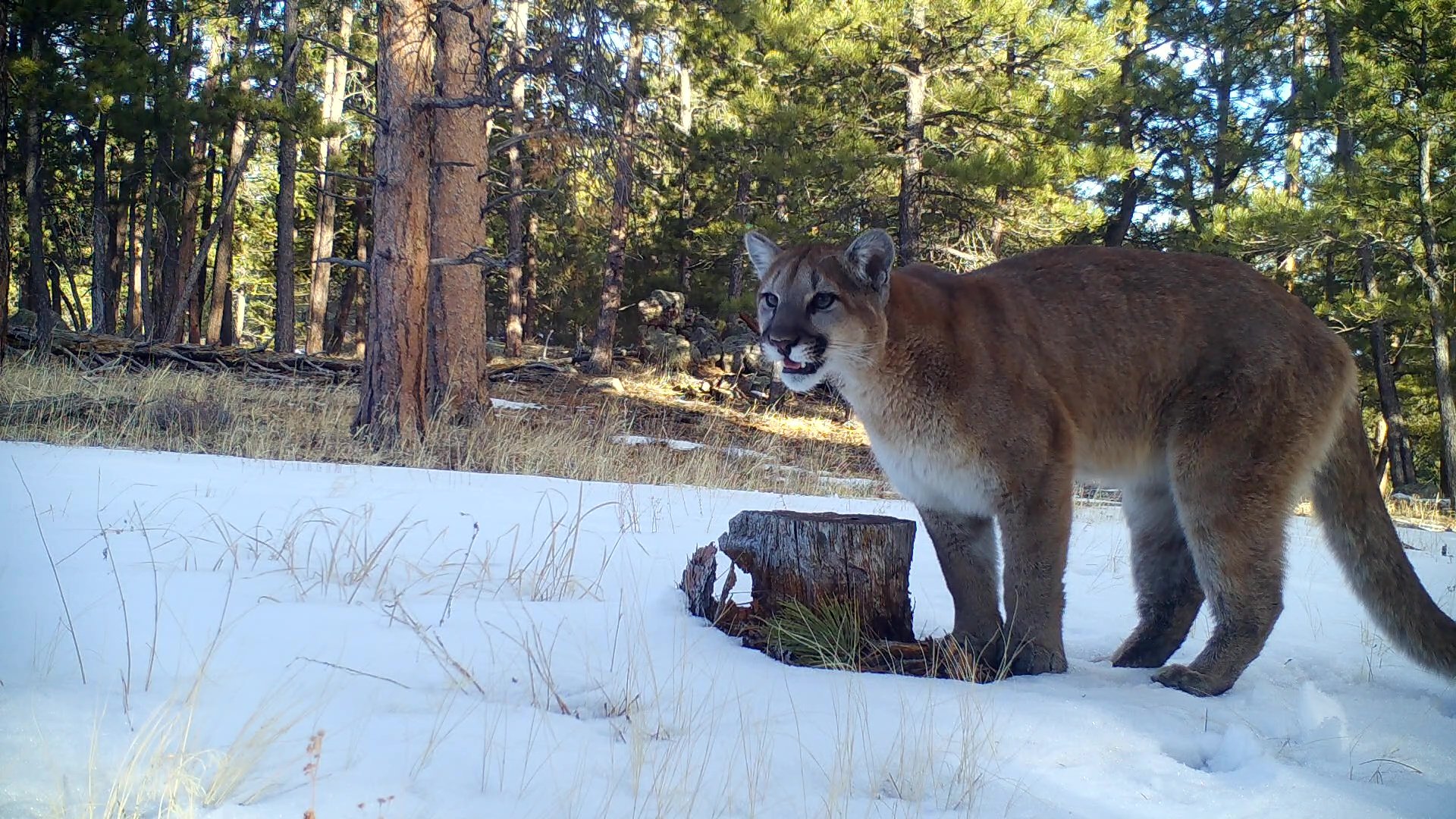Mountain Lions - Where to Look for Activity
Your success in finding mountain lion activity is dependent on a number of activities long before you leave the house and venture afield. Without expectations that are based on solid factors, the odds of finding lion activity or possibly seeing a mountain lion are minimal. Conversely, you can radically swing the odds in your favor knowing exactly where, when and how to look for activity. I’ll share a few tips to get you started, tips you can use immediately.
WHERE TO LOOK
Deciding where to look for mountain lion activity is critical. When considering a new area I’m looking at a number of factors, including:
Juvenile mountain lion following an edge to hunt deer on a nearby slope.
prey density
air currents
limited water
lack of pressure from humans
topography
overall quality of habitat
lack of grazing livestock
clean sources of water
lack of roads
lack of ATV and 4WD use
I chose the area where the male lion was photographed based on my desire to find a travel route where this apex predator was taking advantage of deer and elk feeding on a SE facing slope. This was a unique situation where the sun would melt snow quickly on this face and provide moisture for plant growth, even in the middle of winter. I was seeing elk and deer tracks everywhere, taking advantage of green grass growing at the end of January. But during my time afield I could only see so far with my own eyes. It wasn’t until I looked at the area via Google Earth that I realized where an obvious edge was, a travel route for mountain lions that was downwind of that slope. From there, even on my laptop, it was clear where to set up a camera, resulting in fantastic footage of two juvenile lions.
WHEN TO LOOK
When to look for mountain lion activity is just as important as where to look. When to look is influenced by:
time of year
time of day
weather
snow, mud or dry conditions
barometric pressure
Mountain lions in the northern latitudes adjust how they hunt starting around Thanksgiving through March 15. This time of year as the winter temperatures, both day and night, are much cooler, lions go into conservation mode, minimizing calorie loss while maximizing calorie gain. Over the years I’ve witnessed a marked increase in lion activity on north/south ridges where the dominant wind is out of the west and northwest. Lions can hunt the windward side with great efficiency, capturing the scent of prey across the entire windward slope.
During the winter, mountain lions will focus their hunting where deer and elk are concentrated on winter range areas. In Northern Colorado I witness deer and elk dispersing off of winter range around the middle of March. It is triggered by green up, allowing ungulates to switch from browsing the new growth of brush to grass and forbs.
Changes in barometric pressure have an enormous influence on when I look for mountain lion tracks in the mud or snow. I like to wait a few days after climbing out of a low pressure system until the air currents have stabilized.
Mountain lion checking the wind for the scent of prey.
HOW TO LOOK
Knowing how to look for mountain lion activity is also crucial. Once you understand where and when to look, how to look takes it a step further. Mountain lions, although elusive, are one of the most predictable predators on the landscape. Adopting the mindset of a mountain lion, understanding that the majority of their prey in North America are mule deer and balancing that understanding with how bobcats, coyotes and fox hunt will help you know how to look. I consider this the sauntering phase of looking for mountain lions.
Mountain lions hunt primarily with their nose. Wind currents determine where a mountain lion hunts. I encourage workshop clients to cut a stick, tie six inches of frayed dental floss to the end of the stick and note how the air currents move throughout the day. What what happens between 8:30 am and 11:00 am and you may see a change from cold air drainage to thermal activity or the dominant wind taking over. Aside from using apps like windy.com and wunderground.com, learning the wind currents firsthand in the field will make an enormous difference in your success finding mountain lion activity.
Knowing where, when and how to look requires doing some homework before you head out the door. But in doing so you’ll be rewarded, not only finding mountain lion activity but you’ll learn a tremendous amount about a host of predator and prey species.
I hope these tips will help you be more observant in the field. I know this article is just scratching the surface. If you’d like to learn more, ask a question, share a comment or suggest a future topic, please contact me.

